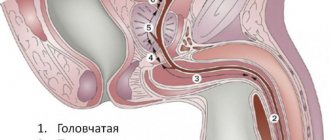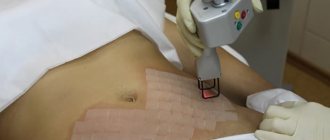August 6, 2021
1462
Prevention
Genes are the basis of heredity. Sections of DNA are inherited from parents and determine what a person looks like. Sometimes genes mutate and the heir develops genetic diseases. It is very important to know exactly how to identify pathologies in the early stages. After all, most diseases of this type cannot be cured, but require maintenance therapy.
What are hereditary diseases?
Hereditary diseases are diseases caused by gene or chromosomal mutations. Humans have between 20,000 and 25,000 genes. A genetic mutation occurs when one or more genes change. If this genetic change is passed on to children, it is an inherited genetic disorder.
If partners have the same carrier status for certain diseases, there is a high risk of having a child with a hereditary disease. If you don't show symptoms, you can still be a carrier and pass the mutations on to your children.
“When I passed the test, life became calmer”: how gene analysis is useful for our clients
Many genetically determined diseases do not appear immediately after birth, but after some time. Congenital diseases caused by intrauterine damage, such as infection or external influences, should be distinguished from hereditary diseases.
How do hereditary diseases differ from congenital disorders?
Genetic diseases result from changes in one or more genes and may or may not be passed on through generations.
All hereditary diseases are of genetic origin, that is, they are the result of changes in one or more genes and are passed on from generation to generation. Symptoms may not appear since birth.
Congenital disorders may or may not be hereditary, and symptoms may appear from birth. But their appearance is not necessarily related to genetics.
Types of hereditary diseases
Hereditary diseases are divided into chromosomal, genetic and mitochondrial.
Chromosomal diseases
Currently, about 1000 forms of chromosomal diseases have been described. Chromosomal diseases result from changes in the number or structure of chromosomes. They are characterized by common features: low body weight and length at birth, retardation in mental and physical development, delay and abnormalities of sexual development, etc.
Chromosomal diseases are rarely inherited. And in more than 95% of cases, the risk of re-birth in a family of a child with a chromosomal pathology does not exceed the general population level. Chromosomal diseases with abnormalities in the number of chromosomes include: Patau syndrome, Edwards syndrome, trisomy 8 syndrome. And chromosomal diseases with abnormalities of chromosome structure - DiGeorge syndrome, Wolf-Hirschhorn syndrome, “cry the cat” syndrome, Alfie syndrome, Orbeli syndrome.
Monogenic diseases
Monogenic diseases result from DNA damage at the gene level. The number of monogenic diseases, according to some estimates, reaches 5000.
Among the signs of monogenic diseases one can highlight: various forms of mental retardation, hearing and vision defects, skeletal dysplasia, diseases of the nervous, endocrine, immune and other systems. The most well-known monogenic diseases include cystic fibrosis, hemophilia A and B, Gaucher disease, Duchenne/Becker muscular dystrophy, spinal muscular atrophy, and color blindness.
Severe monogenic diseases can be identified using prenatal diagnosis, as well as by determining the presence of mutations in parents using a genetic test.
The most interesting thing for me was to learn about the features of metabolism. That is why I chose the Atlas: only here there is a fairly voluminous section on this topic. For example, all my life I have struggled with weight, migraines, neck and back pain, and anemia.
What can you learn from a genetic test?
Mitochondrial diseases
Mitochondrial diseases are caused by genetic, structural, and biochemical defects in the functioning of mitochondria, which lead to disruption of tissue respiration.
Mitochondria contain their own DNA. And diseases caused by mutations in mitochondrial DNA are inherited exclusively through the maternal line. If a mitochondrial disease was inherited this way, there is a 100% chance that every child in the family will inherit it.
Symptoms may include: growth disturbances, muscle weakness, autism, mental disorders, breathing problems, hearing problems and vision problems. Examples of mitochondrial diseases: Leigh syndrome, Wolff-Parkinson-White syndrome, Leber hereditary optic neuropathy and others.
Polygenic or multifactorial diseases
There are also diseases with a hereditary predisposition, which are called multifactorial or polygenic diseases.
Multifactorial diseases are caused by hereditary risk factors, and to a large extent by unfavorable environmental influences. Multifactorial diseases include most chronic diseases, including cardiovascular, endocrine, immune, neuropsychic, oncological, etc. For example, bronchial asthma, diabetes mellitus, rheumatoid arthritis, hypertensive heart disease, etc.
Multifactorial genetic diseases
Multifactorial genetic diseases are pathologies that arise from a combination of genetic predisposition and environmental influences. A simple example: a patient is predisposed to lung cancer + has been abusing smoking for several years. Accordingly, the risk of developing the disease increases by 2 or more times.
The most common multifactorial diseases include psoriasis, liver cirrhosis, rheumatoid arthritis, coronary heart disease, and bronchial asthma.
How are hereditary diseases transmitted?
The human body is made up of trillions of cells. Every cell has a nucleus that contains chromosomes. Each chromosome is made up of tightly coiled strands of deoxyribonucleic acid (DNA).
Genes are instructions for assembling proteins in our bodies that determine specific traits in each person, such as eye or hair color. Most cells in the body typically contain 46 chromosomes, organized into 23 pairs. Each of these 23 pairs has one inherited chromosome from the father and one from the mother. Of the 23 pairs, 22 pairs are the same in female and male organisms, and the remaining one determines whether you are a man (XY) or a woman (XX).
Mutations that cause hereditary diseases can have a dominant or recessive inheritance pattern.
Dominant inheritance means that only one copy of a gene—from the mother or father—must have the mutation (or pathogenic variant of the gene) for the trait or disease to occur. And with the recessive type, a person inherits two altered copies of the same gene.
Autosomal dominant pattern of inheritance
With autosomal dominant inheritance of diseases, a genetically determined disease manifests itself if a person has at least one mutated gene, and this gene is not located on the sex (X and Y) chromosomes.
Huntington's disease and Marfan syndrome are two examples of autosomal dominant diseases. Mutations in the BRCA1 and BRCA2 genes, which are also associated with breast cancer, are transmitted through this pattern.
Autosomal recessive inheritance pattern
In autosomal recessive inheritance, both copies of genes are mutated. To inherit an autosomal recessive disorder such as cystic fibrosis, spinal muscular atrophy, or phenylketonuria (PKU), both parents must be carriers. The child inherits two copies of the defective gene, one from each parent. For example, people who have one copy of a gene with a mutation and the other without the mutation are called carriers because they themselves are healthy.
X-linked recessive inheritance
In X-linked recessive inheritance, the mutated gene is located on the X chromosome. The disease manifests itself only if a person does not have another X chromosome with a normal copy of the same gene.
Duchenne muscular dystrophy, some types of color blindness, and hemophilia A are examples of X-linked recessive diseases. A man with an X-linked recessive disorder will pass on his intact Y chromosome to his sons, and neither will be affected. If he passes on his X chromosome (with the defective gene) to his daughters, then they will all be carriers of the disease. His daughters may have no symptoms or only mild signs of the disease, but they may pass the mutated gene to their children.
Female carriers of an X-linked recessive disorder often have mild or no symptoms. This is because female carriers have one normal copy of the gene and one mutated copy. The normal copy usually compensates for the defective copy in females, unlike males who have only one X chromosome.
Women who have only one pathological gene pass the disease on average to half of their children, regardless of gender. Women who have two pathological genes pass the disease on to all their children. These diseases include hemophilia A and color blindness.
How genetic testing helps with family planning
If you know or suspect that you or your partner have a family history of a genetic disorder, you can determine it with the Atlas Genetic Test. Genetic counseling can help you learn about treatments, preventive measures, and reproductive options.
Fragile X syndrome
Fragile X syndrome (Martin-Bell syndrome) is an inherited disorder characterized by a range of developmental problems, including cognitive impairment, decreased intelligence, autism spectrum disorder, learning disability, and delayed language acquisition.
The disease is caused by a mutation in the FMR1 gene located on the X chromosome; the syndrome is inherited in a dominant, sex-linked manner, is more common in men and causes more severe disorders in them. The FMR1 mutation leads to a multiple increase in the number of CHG trinucleotides and subsequent insufficient production of the FMR1 protein, which is responsible for the development of the central nervous system (the processes of formation of neural connections are disrupted, the ability to learn and remember is reduced).
The prevalence of fragile X syndrome is 1:4000 among boys and 1:6000–8000 among girls. Women pass on the mutation gene 4 times more often than men.
Fragile X syndrome is symptomatically manifested by moderate mental retardation in men and mild mental retardation in women. Physical abnormalities are often noticeable already in childhood (in boys), but in some cases they appear only during puberty. Characteristic: head circumference larger than normal, elongated face, protruding forehead and chin, large ears, mobile joints, decreased muscle tone, incoordination, macroorchidism, flat feet, chronic otitis media, strabismus, flat feet, pectus excavatum, scoliosis, attention deficit disorder and hyperactivity, autism spectrum disorder, delayed motor development, rapid and confused speech with repetitions, episodic seizures, stereotypies, self-harm.
More than 99% of patients with fragile X syndrome have a complete mutation of the FMR1 gene. Molecular genetic testing is performed to determine the number of CGG repeats (usually more than 200) and methylation status. At a child’s early age, a pediatrician can pay attention to deviations in physical development, and at the age of 2–3 years, to cognitive, behavioral, mental and speech disorders. Family history of the disease is an essential criterion for the diagnostic search (male relatives are more often affected).
There is no specific treatment for fragile X syndrome. The patient is prescribed symptomatic therapy depending on the individual situation (antidepressants, antiepileptic drugs), psychological and behavioral correction is provided, and assistance is provided in developing communication, speech, reading and writing skills.
How to treat hereditary diseases and how to live with them?
Previously, hereditary diseases were incurable. Nowadays, this still remains a problem for many diseases, but for some of them, treatments have already been found. For example, this applies to diseases associated with metabolic disorders.
In most inherited metabolic disorders, one enzyme is either not produced by the body at all, or is produced in a form that does not work. For example, in the absence of any enzyme, toxic substances may accumulate in the body or a necessary product may not be synthesized - as in type 1 hemochromatosis.
In this condition, the body absorbs too much iron from food and is unable to get rid of the excess naturally. This can lead to excessive iron accumulation in the heart, pancreas and liver.
Treatment of genetic metabolic disorders follows two general principles:
- It is necessary to reduce or eliminate the intake of any food or medicine that is not absorbed by the body.
- Replace or supplement a missing or inactive enzyme to restore metabolism through diet and/or medication.
There are more serious and common hereditary diseases that have no cure. For example, mecoviscidosis is an accumulation of mucus in the lungs and digestive system. There is no cure for cystic fibrosis, but various methods of controlling symptoms can help prevent or reduce complications and make living with the disease easier.
Cystic fibrosis progresses over time and can be fatal, especially if there are co-infections. Today, thanks to medical advances, about half of people with cystic fibrosis live to be 40 years old. Children born with this disease today may live even longer.
One of the most severe hereditary diseases, spinal muscular atrophy, has also recently been treatable using gene therapy. But this method is not available to everyone. The drug for the treatment of SMA is the most expensive drug in the world.
Treatment or relief of genetic diseases became possible thanks to the international Human Genome project to study and map human genes; a breakthrough occurred in the diagnosis and treatment of hereditary diseases. The results of the project help not only to find genes in which mutations lead to diseases, but also to diagnose them with maximum accuracy.
Diabetes
Type I diabetes mellitus mainly occurs in children. It can begin at any age, but most often manifests itself at 5-8 years of age and in adolescence. Signs:
- frequent urination, urinary incontinence. In infants - a symptom of sticky starched diapers.
- extreme thirst
- increased appetite
- losing weight with a good appetite
Prevention:
- breast-feeding;
- refusal of cow's milk (including mixtures) for up to 8 months and gluten-containing products
- consumption of Omega-3 fatty acids. Mom - throughout pregnancy, baby - until the age of 6 months;
- Vitamin D intake







